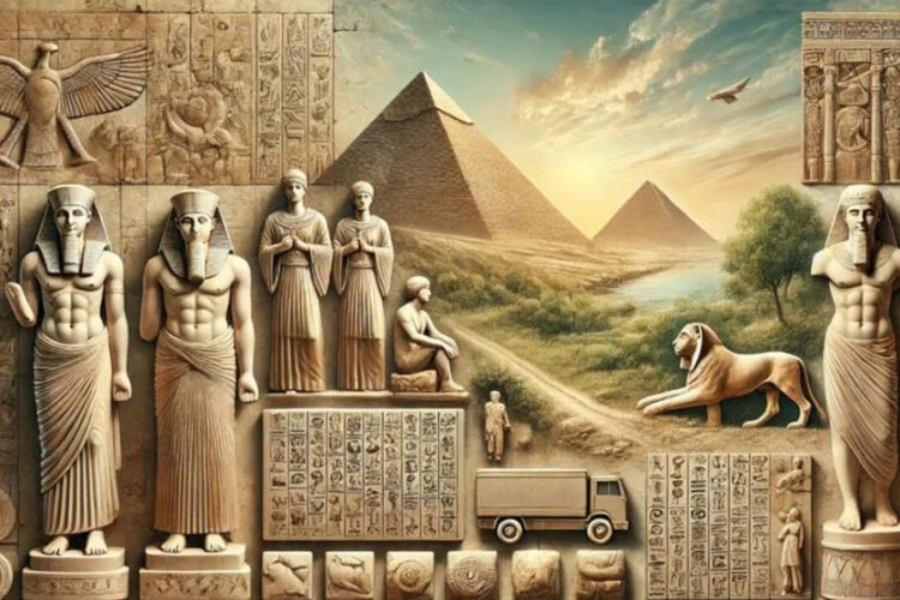Art is often seen as a reflection of humanity’s thoughts, beliefs, and experiences. The story of ancient art, or “ancient artz,” begins tens of thousands of years ago, during a time when early humans used their creativity to leave marks on the world that endure to this day.
This art, spanning a range of styles, materials, and purposes, offers us a window into the lives of our ancestors. From the Paleolithic era to the ancient civilizations of Mesopotamia, Egypt, and beyond, ancient artz serves as a testament to human ingenuity and cultural evolution.
The Dawn of Creativity: Paleolithic Art
Ancient artz dates back approximately 40,000 years, to the Paleolithic era, when the earliest forms of art began to emerge. These early creations were not just expressions of creativity but also vital parts of the communities’ spiritual and ritual lives.
Cave Paintings and Petroglyphs
Some of the most famous examples of ancient artz from this era are the cave paintings discovered in sites like Chauvet-Pont-d’Arc in France and Altamira in Spain. These paintings depict animals such as bison, horses, and mammoths, often created with natural pigments like charcoal, ochre, and hematite.
Petroglyphs, or rock carvings, were another significant art form. Found across continents, these carvings often represent human figures, animals, and abstract symbols. The purpose of these works likely extended beyond mere decoration, serving as spiritual symbols, storytelling tools, or records of hunting practices.
Artz of the Neolithic Revolution
With the Neolithic Revolution, roughly 10,000 years ago, humans began transitioning from nomadic lifestyles to settled agricultural communities. This shift brought profound changes to their art, which became more sophisticated and functional.
Pottery and Ceramics
Pottery emerged as an essential art form during this period. Early ceramics, often decorated with geometric patterns, were not only practical for storing food and water but also symbolic of the growing connection between humans and their environment. Cultures like the Jomon in Japan and the early Mesopotamian societies produced some of the world’s first known pottery.
Megalithic Monuments
The Neolithic era also saw the construction of monumental artz in the form of megalithic structures. Stonehenge in England, Göbekli Tepe in modern-day Turkey, and similar sites demonstrate the advanced engineering and artistic skills of these ancient peoples. These structures often served as places of worship, burial, or astronomical observation.
Artz of Ancient Civilizations
As societies became more complex, ancient artz evolved to reflect the power, religion, and values of emerging civilizations.
Mesopotamian Art
The art of Mesopotamia, often referred to as the “Cradle of Civilization,” was deeply influenced by religion and politics. Ziggurats, large step-pyramids dedicated to deities, stand as a testament to the architectural ingenuity of this era. Additionally, intricate carvings and cylinder seals, which were used to stamp ownership or authority, demonstrate the detailed craftsmanship of Mesopotamian artists.
Egyptian Art
Egyptian art is one of the most iconic forms of ancient artz. It combined aesthetic beauty with symbolic meaning, focusing heavily on the afterlife and divine authority.
- Sculpture and Reliefs: The Great Sphinx and the statues of pharaohs are prime examples of Egyptian art’s grandeur.
- Hieroglyphs: Writing itself became an art form, with hieroglyphic texts meticulously inscribed on tomb walls and monuments.
- Funerary Art: Objects like the golden mask of Tutankhamun and intricately painted coffins were created to honor the dead and secure their journey to the afterlife.
Greek and Roman Art
The ancient Greeks and Romans contributed significantly to the development of Western art.
- Greek Art: The Greeks excelled in sculpture, portraying idealized human forms. Works such as the Venus de Milo and the Parthenon’s friezes illustrate their skill in creating harmonious proportions and lifelike details.
- Roman Art: The Romans adopted and adapted Greek techniques while emphasizing realism. Their frescoes, mosaics, and triumphal arches celebrated military victories and daily life.
Artz in the Americas
Across the Atlantic, ancient civilizations in the Americas also created remarkable artz, often tied to their environment and spiritual beliefs.
Mesoamerican Art
The Olmecs, Mayans, and Aztecs produced intricate sculptures, pottery, and architectural wonders. Colossal stone heads created by the Olmecs and the towering pyramids of Teotihuacan are just a few examples of their artistic achievements.
Andean Art
In the Andes, the Nazca Lines—geoglyphs etched into the desert—remain an enduring mystery. These massive drawings of animals and shapes are believed to have had ritualistic or astronomical significance.
Symbolism and Meaning in Ancient Artz
Ancient artz was rarely created solely for aesthetic pleasure. Instead, it served as a means of communication, religious expression, or social organization. Symbols such as the sun, animals, and geometric patterns frequently appear in ancient artworks, often carrying deep spiritual or cultural significance.
Legacy and Influence
The legacy of ancient artz can be seen in the art and architecture of subsequent civilizations. Modern artists and architects continue to draw inspiration from ancient techniques, motifs, and concepts. By studying ancient artz, we not only learn about the past but also gain insights into the universal human desire to create, express, and connect.
Conclusion
Ancient artz is more than a collection of relics from the past; it is a bridge to understanding the minds and souls of our ancestors. From the rudimentary cave paintings of the Paleolithic era to the elaborate sculptures of ancient Egypt and Greece, these works reveal a deep connection to the natural world, spiritual beliefs, and human ingenuity.
By preserving and studying these artifacts, we honor the creativity and resilience of those who came before us and ensure their stories continue to inspire future generations.
Uncover the Latest Celebrity Buzz and Insights at gossips
